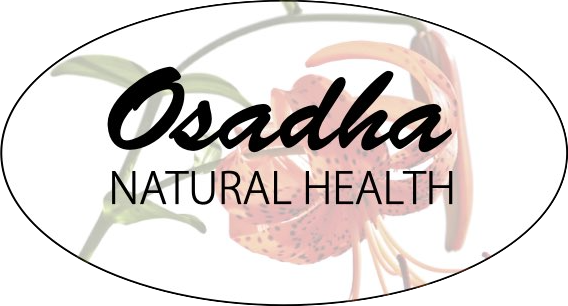Oral overdosing of toxic oils is the cause of very serious outcomes like liver or kidney damage, convulsions, coma and, in multiple cases, death. But even low oral doses or topical application can be a problem with some oils. Most of us don’t ingest essential oils in large amounts, but what happens with regular, lower dose use of oils containing high levels of toxic components? For the most part it’s a big unknown.
Being commercially available doesn’t mean that an essential oil is safe. That said, most oils on the market are generally safe with reasonable usage. This means that there are lots of great oils to use instead of those that can potentially cause problems. Here are 8 commercially available oils with the potential to cause problems, along with some safer substitutes for them.
1) Black Mustard (Brassica nigra)
Mustard essential oil has been used as a circulatory and digestive stimulant, as well as for pain and infections. But it’s Hot with a capital H! Ever tried a mustard plaster with the seed or powder? Ouch, even this can burn you!
Why to avoid it
• Strong skin and mucus membrane irritant. Blistering possible (1)
• Inhalation very irritating to respiratory tract and eyes (1)
Chemical(s) responsible
• Allyl isothiocyanate, which is also in horseradish essential oil (1)
Use instead
• Digestion, circulation and achy muscles – Rosemary (Rosmarinus officinalis)
• Pain or infection – Lavender (Lavandula angustifolia), frankincense (Boswellia species) and/or sweet marjoram(Origanum majorana)
2) Wintergreen (Gaultheria procumbens)
This is a popular oil, with a sweet, candy-like scent. It’s mainly used as a muscle liniment and for joint pain.
Why to avoid it
• Oral overdosing may lead to convulsions, coma and, possibly, death (1).
• Ingestion of about a teaspoon or more has been fatal in children (1). It’s appealing scent may have tempted them to drink it.
• Topical preparations (creams, etc) have resulted in toxicity (1), though many use wintergreen topically for pain without any apparent issues
Chemical(s) responsible
• Contains over 90% methyl salicylate, which can impact the nervous system, circulatory
system, liver and kidneys.
Use instead
• Pain – Frankincense, sweet marjoram and/or lavender
• Muscle linament – Rosemary (Rosmarinus officinalis)
3) Parsleyseed (Petroselenium cripsum)
Parsley leaf reigns in the kitchen and is a super healthy addition to the diet when not overdone. Parsleyseed oil is from the same plant and has been used for digestive and menstrual cramping, menstrual cycle irregularities, musculoskeletal pain, urinary tract issues and for treating viral infections.
Why to avoid it
• Fatalities have occurred from accidental or deliberate ingestion of parsleyseed oil at high doses (1)
• Liver, kidney, and digestive tract toxicity possible in people (1)
• The German Commission E Monograph for parsleyseed oil concludes that it’s benefits don’t outweigh the risks.
Chemical(s) responsible
• Parsley apiole – 11 to over 60% of the essential oil (1)
Use instead
• Cramping – German chamomile (Matricaria recutita)
• Musculoskeletal pain – Lavender, frankincense and/or marjoram
• Menstrual cycle support – Rose (Rosa species), Geranium (Pelargonium species) or clary sage (Salvia sclarea)
• Viral infection – Lavender
4) Calamus (Acorus calamus)
I have calamus root in my apothecary, but not the essential oil, which is used oil is used in perfumery, for memory support, for nervous tics, and for musculoskeletal pain.
Why to avoid it
• The purified essential oil may be a liver toxin (1).
• Potential for toxicity from skin absorption has led to only very dilute amounts recommended for topical use (0.2% or 2 drops per every 1000 drops of carrier)(1).
• Cancer promoting in rats (1), though rat experiments don’t always reflect what happens in people
Chemical(s) responsible
• Commercial calamus essential oil is often from an Asian, variety that contains the
potential liver toxin, beta-asarone, in high amounts.
• Methyl eugenol may be present as well, and is toxic to the liver in small amounts.
Use instead
• Musculoskeletal pain – Frankincense, lavender, sweet marjoram
• Nervous system tics – Lavender, frankincense, chamomile, tangerine
• Memory – Rosemary
5) Pennyroyal (Mentha pulegium)
As a plant, pennyroyal has a long history of use for a variety of health issues: Cold/flu, indigestion, lack of menses, fever and as an abortifacient. The oil is sold for similar uses and has generated a notorious reputation.
Why to avoid it
• Can cause liver and kidney damage, as well as seizures, with high oral dosing (~ 1 tsp) (1, 2)
• Has caused multiple fatalities (1, 2)
• Oil toxicity has been observed even in small quantities (1)
• The tea has also caused toxicity (1)
• Topical over-usage as flea repellent has resulted in canine deaths (1)
Chemical(s) responsible
• Pugelone, present in high quantities in the oil (1, 2)
Use instead
• Indigestion – Chamomile, lavender, sweet marjoram
• Cold/flu – Lavender, sweet marjoram
• Menstrual cycle support – Rose, geranium or clary sage
6) Tansy (Tanacetum vulgare)
A beautiful plant that may be best to just look at! Tansy oil has been used for worms, to bring on delayed menses, as an antiseptic, as an anti-inflammatory and anti-histamine.
Why to avoid it
• Can cause digestive tract inflammation, vomiting, liver toxicity, convulsions, rapid breathing and irregular heart beat (1)
• Oral overdosing has caused fatalities (1, 2)
• External use can cause toxicity (1)
• Even the tea has shown toxicity (2)
Chemical(s) responsible
• Thujone, a neurotoxin – Tansy essential oil is almost half thujone.
Use instead
• Worms – Garlic cloves
• Antiseptic – Lavender
• Menstrual cycle support – Rose, geranium or clary sage
• Inflammation – Chamomile, frankincense
• Anti-histamine – Chamomile
7) Sage (Salvia officinalis)
Yup, plain old garden sage. I frequently use sage tea and tincture for myself and my clients. Just not the essential oil. Sage is used for too many things to list….digestion, brain function, infection, and more!
Why to avoid it
• Folks have had seizures after ingesting 12 or more drops of sage oil.
• One of my aromatherapy teachers didn’t even like to use the oil as an inhalant for folks already having any sort of nervous system issue (tics, seizures, anxiety, etc)
Chemical(s) responsible
• Thujone, a neurotoxin – Sage oil averages around 30-50% thujone, with levels sometimes close to 70% (1)
Use instead
• The tea! The tincture! These are great!
8) Cedar (Thuja species)
Cedar is used for bronchitis, menstrual cycle support, skin issues and musculoskeletal pain, as room disinfectants and to terminate pregnancies. Cedar has also been used for grounding. Note that these are from completely different species than oils such as Atlas cedarwood.
Why to avoid it
• Convulsions have resulted, even from ingestion of a 0.1% dilution (1 drop per 1000 drops of carrier) of northern white cedar (T. occidentalis) (1).
• Reproductive effects – Uterine stimulatory activity, and may suppress ovulation (2)
• Skin reactions and contact allergies have occurred (2)
Chemical(s) responsible
• Thujone, a neurotoxin – High in both oils, though higher in western red cedar (1, 2)
Use instead
• Grounding – Vetiver
• Room disinfectant – Rosemary
• Menstrual cycle support – Rose, geranium or clary sage
• Skin issues – German Chamomile
• Musculoskeletal pain – Frankincense, lavender, sweet marjoram
• Bronchitis – Lavender, Roman chamomile (Anthemis nobilis)
References
- Tisserand, R. and R. Young (2014) Essential Oil Safety, 2nd Edition. Elsevier, Churchill, Livingstone.
- Mills, S. and K. Bone (2005) The essential guide to herbal safety. Elsevier, Churchill, Livingstone.
~~~
Content © Dr. Anna Marija Helt, Osadha Natural Health, LLC. Permission to republish any of the articles or videos in full or in part online or in print must be granted by the author in writing.
The articles and videos on this website for educational purposes only & have not been evaluated by the Food and Drug Administration. This information is not intended to diagnose, treat, cure, or prevent any disease or to substitute for advice from a licensed healthcare provider.
